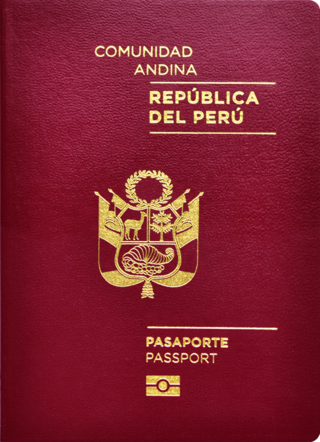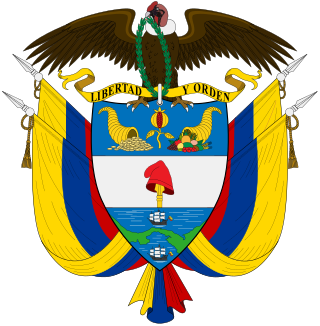
Naturalization is the legal act or process by which a non-national of a country acquires the nationality of that country after birth. The definition of naturalization by the International Organization for Migration of the United Nations excludes citizenship that is automatically acquired or is acquired by declaration. Naturalization usually involves an application or a motion and approval by legal authorities. The rules of naturalization vary from country to country but typically include a promise to obey and uphold that country's laws and taking and subscribing to an oath of allegiance, and may specify other requirements such as a minimum legal residency and adequate knowledge of the national dominant language or culture. To counter multiple citizenship, some countries require that applicants for naturalization renounce any other citizenship that they currently hold, but whether this renunciation actually causes loss of original citizenship, as seen by the host country and by the original country, will depend on the laws of the countries involved.

A green card, known officially as a permanent resident card, is an identity document which shows that a person has permanent residency in the United States. Green card holders are formally known as lawful permanent residents (LPRs). As of 2019, there are an estimated 13.9 million green card holders, of whom 9.1 million are eligible to become United States citizens. Approximately 18,700 of them serve in the U.S. Armed Forces.

A visa is a conditional authorization granted by a polity to a foreigner that allows them to enter, remain within, or leave its territory. Visas typically include limits on the duration of the foreigner's stay, areas within the country they may enter, the dates they may enter, the number of permitted visits, or if the individual can work in the country in question. Visas are associated with the request for permission to enter a territory and thus are, in most countries, distinct from actual formal permission for an alien to enter and remain in the country. In each instance, a visa is subject to entry permission by an immigration official at the time of actual entry and can be revoked at any time. Visa evidence most commonly takes the form of a sticker endorsed in the applicant's passport or other travel document but may also exist electronically. Some countries no longer issue physical visa evidence, instead recording details only in immigration databases.
Permanent residency is a person's legal resident status in a country or territory of which such person is not a citizen but where they have the right to reside on a permanent basis. This is usually for a permanent period; a person with such legal status is known as a permanent resident. In the United States, such a person is referred to as a green card holder but more formally as a Lawful Permanent Resident (LPR).

Peruvian nationality law is regulated by the 1993 Constitution of Peru, the Nationality Law 26574 of 1996, and the Supreme Decree 010-2002-IN, which regulates the implementation of Law 26574. These laws determine who is, or is eligible to be, a citizen of Peru. The legal means to acquire nationality, formal membership in a nation, differ from the relationship of rights and obligations between a national and the nation, known as citizenship. Peruvian nationality is typically obtained either on the principle of jus soli, i.e. by birth in Peru; or under the rules of jus sanguinis, i.e. by birth abroad to at least one parent with Peruvian nationality. It can also be granted to a permanent resident, who has lived in Peru for a given period of time, through naturalization.
A K-1 visa is a visa issued to the fiancé or fiancée of a United States citizen to enter the United States. A K-1 visa requires a foreigner to marry his or her U.S. citizen petitioner within 90 days of entry, or depart the United States. Once the couple marries, the foreign citizen can adjust status to become a lawful permanent resident of the United States. Although a K-1 visa is legally classified as a non-immigrant visa, it usually leads to important immigration benefits and is therefore often processed by the Immigrant Visa section of United States embassies and consulates worldwide.

Visitors to the United States must obtain a visa from one of the U.S. diplomatic missions unless they are citizens of one of the visa-exempt or Visa Waiver Program countries.

Birth tourism is the practice of traveling to another country or city for the purpose of giving birth in that country. The main reason for birth tourism is to obtain citizenship for the child in a country with birthright citizenship. Such a child is sometimes called an "anchor baby" if their citizenship is intended to help their parents obtain permanent residency in the country. Other reasons for birth tourism include access to public schooling, healthcare, sponsorship for the parents in the future, hedge against corruption and political instability in the children’s home country. Popular destinations include the United States and Canada. Another target for birth tourism is Hong Kong, where some mainland Chinese citizens travel to give birth to gain right of abode for their children.

Argentine passport are issued to citizens of Argentina by the National Registry for People (ReNaPer). They were issued exclusively by the Argentine Federal Police up to 2011. Their primary use is to facilitate international travel.

A Peruvian passport is a travel document issued to citizens of Peru with the purpose of identification and to travel outside the country. It is issued by the Superintendencia Nacional de Migraciones, the Peruvian immigration and naturalization authority, which is part of the Ministry of the Interior. The Peruvian passport has the benefit of "visa free" status for member nations of the Andean Community and Mercosur, as well as several Central American nations.
Ideas and practices of nationality and citizenship in the Republic of Argentina have changed with distinct periods of its history, including but not limited to periods of indigenous, colonial, republican, and military rule.

Argentine nationality law regulates the manner in which one acquires, or is eligible to acquire, Argentine nationality. Nationality, as used in international law, describes the legal methods by which a person obtains a national identity and formal membership in a nation. Citizenship refers to the relationship between a nation and a national, after membership has been attained. Argentina recognizes a dual system accepting Jus soli and Jus sanguinis for the acquisition of nationality by birth and allows foreign persons to naturalize.

Citizenship of the United States is a legal status that entails Americans with specific rights, duties, protections, and benefits in the United States. It serves as a foundation of fundamental rights derived from and protected by the Constitution and laws of the United States, such as freedom of expression, due process, the rights to vote, live and work in the United States, and to receive federal assistance.

Visa requirements for Venezuelan citizens are administrative entry restrictions by the authorities of other states placed on citizens of Venezuela.

Colombian nationality is typically obtained by birth in Colombia when one of the parents is either a Colombian national or a Colombian legal resident, by birth abroad when at least one parent was born in Colombia, or by naturalization, as defined by Article 96 of the Constitution of Colombia and the Law 43-1993 as modified by Legislative Act 1 of 2002. Colombian law differentiates between nationality and citizenship. Nationality is the attribute of the person in international law that describes their relationship to the State, whereas citizenship is given to those nationals that have certain rights and responsibilities to the State. Article 98 of the Colombian constitution establishes that Colombian citizens are those nationals that are 18 years of age or older. Colombian citizens are entitled to vote in elections and exercise the public actions provided in the constitution.
Multiple citizenship is a person's legal status in which a person is at the same time recognized by more than one country under its nationality and citizenship law as a national or citizen of that country. There is no international convention that determines the nationality or citizenship status of a person, which is consequently determined exclusively under national laws, that often conflict with each other, thus allowing for multiple citizenship situations to arise.
Illegal immigration in Chile is a phenomenon that largely began in the 1990s as a result of economic growth and political stability in Chile. Most immigrants are South American, with the largest wave being Peruvian, although there has also been a significant amount of migration from the Caribbean. Illegal immigration is primarily caused by a lack of security or economic opportunities in the country of origin.

According to the Japanese Ministry of Justice, the number of foreign residents in Japan has steadily increased in the post Second World War period, and the number of foreign residents was more than 2.76 million at the end of 2022. Being a country with a total estimated population of 125.57 million in 2020, the resident foreign population in Japan amounts to approximately 2.29% of the total population.

Immigration to Vietnam is the process by which people migrate to become Vietnamese residents. After the declaration of independence in 1945, immigration laws were modified to give the central government some control over immigrant workers arriving from nearby South Asian countries such as China, Cambodia, Laos, the Philippines, and Thailand. The Vietnam Immigration Department recently relaxed the strict controls on immigrant workers under Decree 21/2001/ND-CP, 34/2008/NĐ-CP and 46/2011/NĐ-CP.
Latin American migration to Europe is the diaspora of Latin Americans to the continent of Europe, dating back to the first decades of the Spanish and Portuguese empires in the Americas. Latin Americans in Europe are now a rapidly growing group consisting of immigrants from Argentina, Bolivia, Brazil, Chile, Colombia, Costa Rica, Cuba, Dominican Republic, Ecuador, El Salvador, Guatemala, Honduras, Mexico, Nicaragua, Panama, Paraguay, Peru, Puerto Rico, Uruguay and Venezuela. It may also include individuals from certain French-speaking territories depending on the definition of Latin America used.















